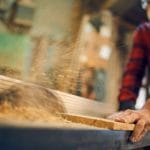Automation is still a new concept in the world of food manufacturing. Many industries are still weighing their options when it comes to investing in robots.
With the number of manufacturers investing in this technology increasing by the day, it’ll soon become a necessity. Robots offer speed, flexibility, precision, and flexibility, which is good for all businesses.
However, since automation is new, most manufacturers don’t understand what to look for in a robot. And this can be catastrophic for your food production.
So, here are five things to look for before investing in a robot for your business.
1. Your production needs
Before you jump into buying a robot for your industry, you need to understand why you need it. Which area of your production is lacking? Which area needs automation? Is automation the best solution?
Just because robots offer numerous profits doesn’t mean they’ll benefit your business. So, you have to be clear that you’re purchasing the robot out of need and not pressure.
Identify the critical areas of your food production line and determine if a robot is the best solution for that area. Look at what impact it’ll have on your employees; will they be on board with the whole idea?
Asking yourself these questions will help you get the best robot for your plant.
2. Robot accuracy and repeatability
Once you’ve identified the areas in your production that can be automated, it’s time to choose a robot. First, look into the accuracy, precision, and repeatability of the robot.
You need a robot with the lowest margin of error. Remember, even the slightest of errors in production can be poisonous to your customers in the food industry. It’ll also be terrible for your company’s reputation.
Consider also how fast the robot can repeat a task, and for how long. Your robot needs to cover most of the repetitive tasks on your production as they are more accurate than workers.
The higher the accuracy and repeatability, the better the robot.
3. Consider your floor space
Industrial robots for sale come in different sizes, weights, and shapes. So, before bringing the robot to your industry, you need to be sure that you have enough space for the robot.
If you’re getting a tabletop robot, then ensure that you have enough space for the robots. If the robot is portable, then ensure that your floorspace is optimized to facilitate the movement.
Furthermore, if you’re going to be shifting the robots across different workplace areas, you’ll need extra space. This means adequate space for your workers as well as the robot without interfering with each other’s activities.
4. Flexibility (long-term picture)
Robots are essentially computers that can move. And so, they’re merely technology. So, when new technology comes up, they are at risk of being obsolete.
To avoid this, you need to ensure that your robot is flexible enough to adapt to new changes. Ensure that its software can be updated to the ones used in the market and that all end tools can be changed.
Flexibility is the biggest weapon you can have in a robot. So, ensure that when your production strategy changes, the robot can quickly adapt as well.
Collaborative robots are an excellent choice for flexibility. They are super versatile, and they can be easily reprogrammed.
5. Cost of the robot
When purchasing any equipment for your food manufacturing industry, the cost should always be a reference – robots included.
Look into the investment costs, the maintenance costs, labor costs, and other miscellaneous costs that may arise from the purchase. Looking at it from this perspective will help you determine if you can afford such charges in the long run.
However, when you find a quality robot for your industry, it may be worth spending that extra dollar.
Final thoughts
Robotic technology is proving to have a bright future in the food manufacturing industry. However, this is no reason for you to make investment decisions.
Before getting that robot, consider these factors above, and you might just have made the best decision for your industry.





